When it went on sale in the UK on 8 January 2007, the all-new fourth-generation Lexus LS 460 was hailed as an engineering masterpiece, a car that truly exemplified the brand’s obsession with perfection. It also marked an important change in philosophy, from evolution to a clean-sheet approach that challenged conventional engineering wisdom.
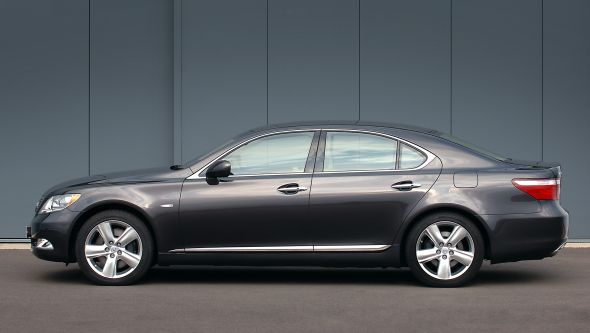
History of the Lexus LS: fourth generation
No major components were carried over from the previous generation LS 430, a fact that directly contributed to the new LS becoming the most expensive standard production project in the company’s history. However, the considerable investment was validated when it was declared World Car of the Year 2007 by a group of international journalists.
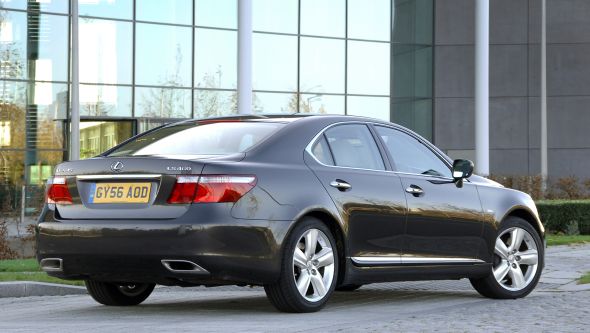
For the first time in the model’s history, the LS was produced as a range rather than a single model. There were two trim grades from launch, joined soon afterwards by the LS 600h, the first petrol-electric hybrid in the segment. Later the line-up was extended to include a mechanical all-wheel drive version of the LS 460 and the first long-wheelbase production Lexus, the LS 600hL (see below). With an extra 120mm dedicated to rear cabin space, this version offered unparalleled passenger comfort.
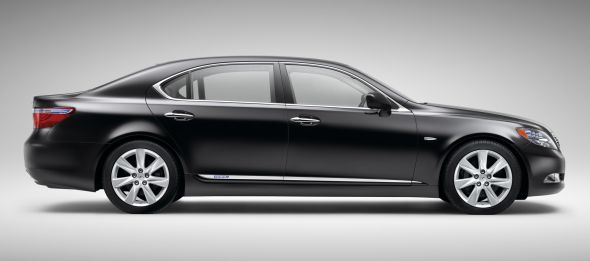
The LS 460 was powered by a completely new 4.6-litre V8 engine, the most technically advanced unit Lexus had ever built. It produced 35% more power (now 375bhp) and up to 30% more torque than the outgoing 4.3-litre unit while delivering greater fuel economy and lower emissions.
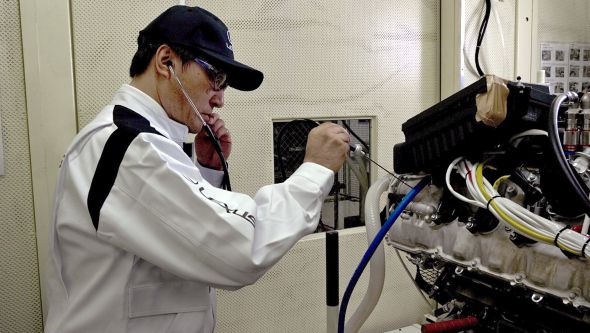
Constructed in a new high-strength aluminium alloy with a magnesium head, the engine was exceptionally light. Many of the internals were also redeveloped to reduce any negative effects on performance; a prime example was the camshafts, which were now hollow with separate cam lobes. Related to this was the inclusion of VVT-iE, the world’s first electronically controlled, variable valve timing system on the intake camshafts. In contrast to the previous hydraulically activated system, this was designed to work across the full spectrum of engine speed and temperature, even when the engine is cold or running below 1,000 rpm.
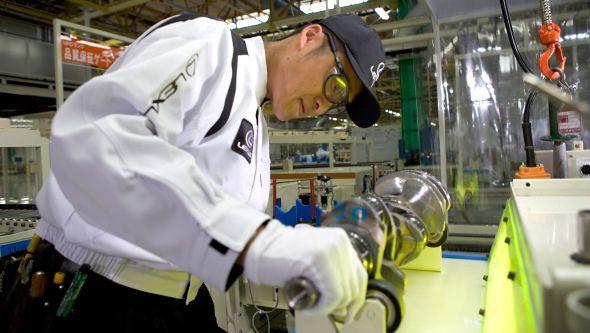
The primary goal of the engineers was to optimise engine performance by minimising friction and increasing assembly precision. All parts were designed to allow for natural expansion, thereby ensuring that thermal deformation would only occur within the precise parameters established at the design stage. Meanwhile, internal contact patches were mirror-polished, and supply routes for oil, air and water were either smoothed, de-burred or polished to minimise resistance.
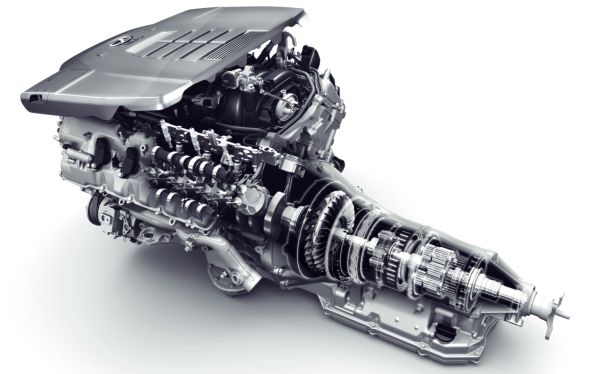
Directing power towards the rear wheels was the world’s first eight-speed automatic transmission. With external dimensions identical to the outgoing six-speed unit, the new gearbox was a feat of miniaturisation. And as there are no sound-proofing materials within the driveline, every care was taken during development to minimise noise and vibration. Indeed, completed drivetrains were tested to ensure they operated at a level no greater than ten decibels, roughly equivalent to normal breathing.

The original LS 400 was the first car in the world to use high-precision laser welding in its body structure. In the new LS, the application of this technology more than doubled. Built to the highest manufacturing tolerances, the body structure’s weight balance, inertia moments and torsional rigidity were honed to optimise ride comfort, linear stability and superior chassis and steering response. Ultra-high tensile steel now accounted for 40% of the steel body components, while aluminium was used on strategic components such as the bonnet assembly, front and rear crash box structures, and the new die-cast single-piece front subframe.

Sleek L-finesse bodywork and a flat under-body gave the new LS a drag coefficient of just 0.26Cd, the lowest in its class. Also unique within the segment was adaptive multi-link air suspension with vehicle posture control that synchronised roll and pitch when cornering, and electro-hydraulic braking for more precise brake force distribution.

Among the many innovations featured in the fourth-generation LS, perhaps the most significant was a revolutionary concept that integrated several electronically managed components. They formed an intelligent network that sought to avoid accidents through active anticipation while mitigating the consequences should the worst happen. Operation of the engine, automatic transmission, adaptive suspension, steering and brake systems, stability control systems and support sensors, including the millimetre-wave radar and stereo imaging camera (see below), were painstakingly harmonised to achieve unprecedented levels of safety and driving dynamics.

This new Pre-Crash Safety package (see components illustration below) included four world-firsts in preventative safety: Advanced Obstacle Detection System, Emergency Steering Assist, Rear Pre-Crash Safety System and Driver Monitoring System.
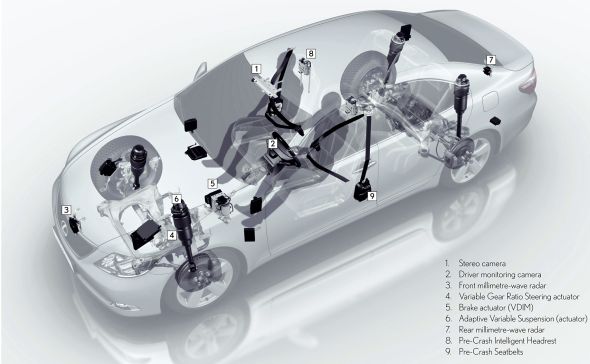
Simply put, the road ahead was scanned by radar and infra-red camera to warn of any potential collision with another vehicle or even a pedestrian, day or night, while another camera follows the driver’s head movement and triggers an alert if their eyes are not looking ahead when a collision risk is detected. Emergency manoeuvres are assisted, but if there is no avoiding an impact, the brakes, seat belts, headrests and suspension are all primed to deliver peak performance and minimise damage to occupants.
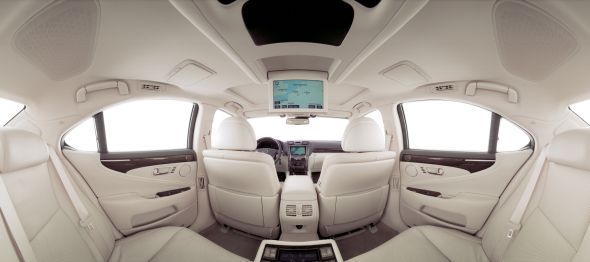
By insisting on the adoption of expressly human-centred technologies, Lexus engineers further improved the level of hospitality the LS provided for every occupant. The luxury and attention to detail were incredible: the fact that every compartment lid was engineered with the same damping force so that they all opened in the same direction and at the same speed was just one small thoughtful touch. Then there was the sequenced illumination that corresponded to the entry or exit of driver and passengers, and the assisted closing of the doors so there was never a need to slam them shut.
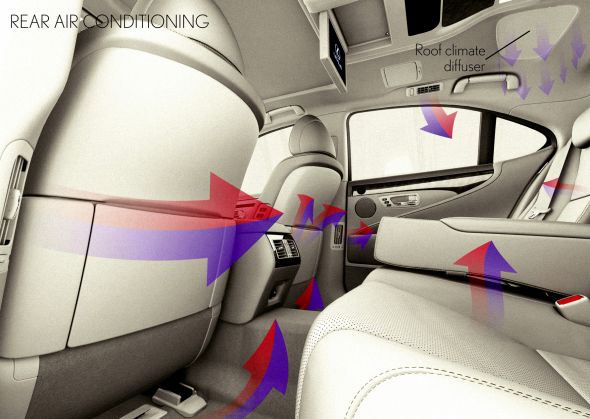
Mark Levinson created a 19-speaker audio system specifically for the car; front and rear seats were heated and air-conditioned; and air diffusers in the headlining counteracted the effect of solar heat through the rear window to ensure the four-zone climate control maintained the perfect atmosphere on board. The LS 460 was also the first car in its class to provide a rear parking assist monitor as standard.
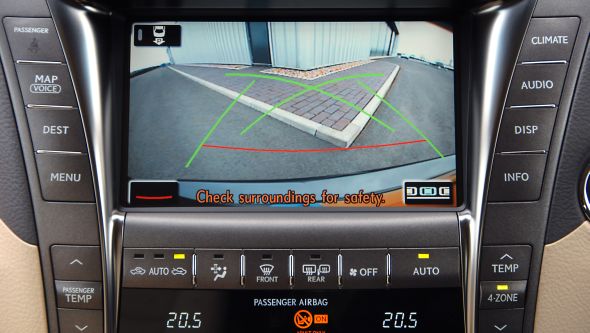
The fourth-generation Lexus LS received a mild visual and specification refresh for the 2010 model year, but in October 2012 order books were opened to purchase the comprehensively facelifted version. This substantial update introduced the distinctive spindle grille arrangement to the front end and a number of further advancements, including an F Sport model with a host of chassis and visual upgrades.
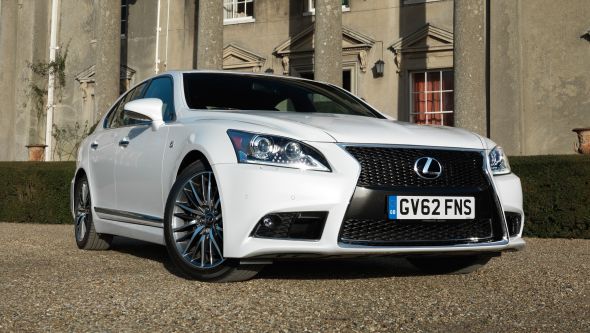
Over the course of its development and production, the fourth-generation Lexus LS developed the core concept of human-centred engineering and advanced functionality that has been a hallmark of all previous LS models. It also reflected the way society developed, responding to the needs of new customers who demanded the best in safety and environmental performance.
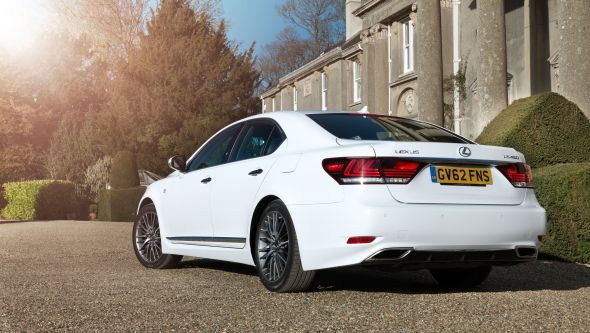
All information was correct at the time of publishing.





Absolutely the most remarkable vehicle i have ever had the privilege of owning
Hello Glenn,
Thanks for your support – clearly you have great taste in cars!
All the best.
My 2023 LS500h is a lovely car only spoilt by the lack of rear dash-cam which still cannot be fitted, even though its advertised in the brochure. Lack of connected services with Lexus link is also a bit irritating.
After a number of Lexus, I’ve moved on to an LS600hL, early impressions are impeccable, but, your Takumi master craftsmen would not be happy with how the extended leather dashboard has fared. I’ve contacted Lexus directly about this, but what a shame; the leather has completely pulled itself away and now looks unsightly on an otherwise, seamless car. I’m hoping Lexus can offer some support on one of their flagship cars.
Hello Paul, thanks for your comment.
We are sorry to hear you’re experiencing issues with your vehicle.
You have done the right thing contacting your Lexus centre. They will work to support you as best as they can.
Alternatively, you may wish to contact our Customer Relations team for further support. The team can be reached here: https://www.lexus.co.uk/help-centre
Please let us know if we can assist further.
Thanks.
Does anyone have a used one they can sell to me today
Hi there, thank you for your comment.
Our approved used range can be found here: https://www.lexus.co.uk/pre-owned. Your local Lexus Centre may also be able to assist.
Thanks,
Lexus UK
My 2008 LS460 SE L is without doubt the best car I’ve ever owned.
It’s currently on 189000 miles and looks and drives as if it’s done 50000
The technology that went into designing this car is wonderful, in particular the world first 8 speed auto
I have owned five LS models- company and private.
Current is a 2011 SEL with 180k – and you just cannot tell from some of the new ones I have owned (400,430)
Absolutely unquestionably the very best vehicle in terms of comfort and dynamics I have owned.
I have just one piece of advice – at 100k or ten years get the radiator changed. Not overly expensive but quite possibly the only weak link the car has.
I am a retired engineering company director – I still service this one and having the tools interrogate the 11 ECU regularly
Not a single blip ever in hundreds of parameters.
Hate the tyre pressure system but that is not the fault of the car
Fantastic – just an amazing piece of engineering
Thank you for taking the time to share your feedback, Dr Lewis.
We wish you many more reliable and luxurious miles in your Lexus LS.